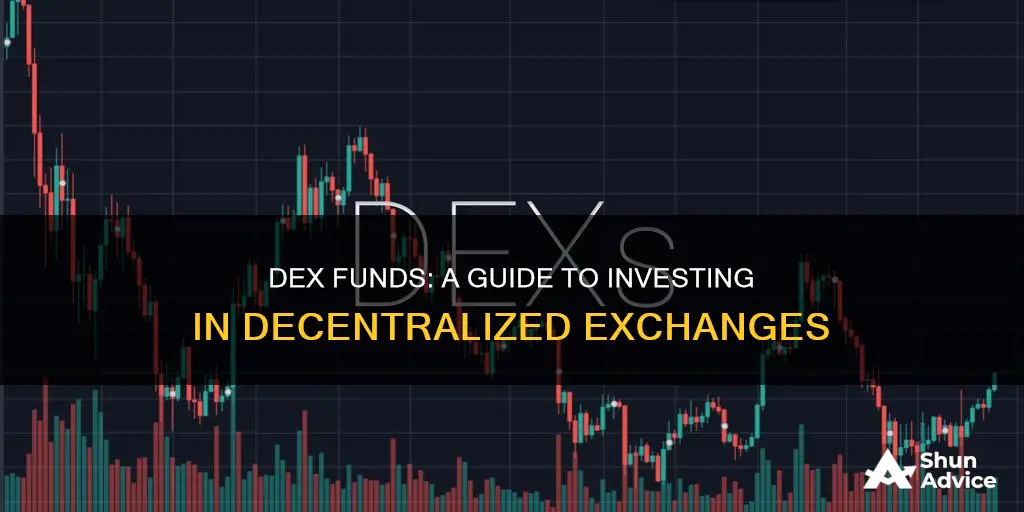
Index funds are a type of investment vehicle aiming to match the returns of a specific market index. They are a low-cost, easy way to build wealth. Index funds are less expensive than actively managed funds and typically carry less risk than individual stocks. They are a great investment for building wealth over the long term.
Index funds are either mutual funds or exchange-traded funds (ETFs) that aim to track the performance of a market index, such as the S&P 500. They are designed to be a passive investment strategy, meaning that they don't require active management decisions. Instead, they aim to replicate the performance of a particular index by holding a basket of securities that make up that index. This means that the performance of an index fund usually closely mirrors that of the index it tracks.
There are several benefits to investing in index funds, including diversification, low costs, tax efficiency, and ease of use. Index funds can also be customised to suit specific investment goals and strategies. For example, investors can choose from a range of index funds that focus on different sectors, geographies, or asset classes.
When investing in index funds, it's important to consider factors such as the fund's expense ratio, investment minimum, and long-run performance. It's also crucial to have a clear understanding of your financial goals and risk tolerance before investing.
| Characteristics | Values |
|---|---|
| Type of investment vehicle | Mutual fund or exchange-traded fund (ETF) |
| Purpose | To match the returns of a specific market index |
| Benefits | Low costs, low fuss, low risk, diversification, tax efficiency, ease of trade |
| Drawbacks | Average market returns, management fees, possible tracking errors, no downside protection, no control over investment holdings |
What You'll Learn

What are index funds?
Index funds are a type of mutual or exchange-traded fund (ETF) that tracks the performance of a market index, such as the S&P 500, by holding the same stocks or bonds or a representative sample of them. They are defined as investments that mirror the performance of benchmarks like the S&P 500 by mimicking their makeup.
Index funds are a passive investment strategy, meaning they don't involve active management. Fund managers aim to replicate the index without active management, and these funds track popular indexes, which are often referenced in financial news as indicators of overall market performance.
Index funds are based on a preset basket of stocks or an index. The fund managers buy all or a representative sample of the stocks or bonds in the index it tracks. For example, an S&P 500 index fund will hold the stocks that make up the S&P 500 index in an effort to match its performance.
Index funds are popular with investors because they promise ownership of a wide variety of stocks, greater diversification, and lower risk, usually at a low cost. They are also good for beginners because they don't require much knowledge about investing or financial markets.
Bond Funds vs Individual Bonds: Pros and Cons for Investors
You may want to see also

How do they work?
Index funds are a type of investment vehicle, such as a mutual fund or exchange-traded fund (ETF), that tracks a market index such as the S&P 500 or the Russell 2000. They are designed to mirror the performance of a market index and are considered a passive investment strategy.
Index funds work by tracking a specific index, such as the S&P 500, which is made up of 500 large US companies. The fund will then hold the same securities in the same or similar proportions as the index. For example, an S&P 500 index fund will typically hold the same 500 companies that the S&P 500 index represents. If a company is removed from the index, the fund will sell its shares in that company and replace them with shares in the company that replaces it.
Index funds are passively managed, meaning that investment decisions are based solely on trying to match the performance of the index. This is in contrast to actively managed funds, where fund managers try to "beat the market" by actively selecting stocks. Index funds tend to have lower fees than actively managed funds, as they require less active management.
There are two main types of index funds: those that track a broad market index, such as the S&P 500, and those that track a specific sector or theme, such as healthcare or technology. Index funds can also be classified by the asset class they invest in, such as equity or bond index funds.
When investing in index funds, it is important to consider factors such as fees, investment minimums, and the fund's performance relative to its underlying index. It is also important to align your investment goals and risk tolerance with the type of index fund you choose. For example, a bond index fund may be more suitable for someone nearing retirement, while an equity index fund may be more suitable for a long-term investor.
Unlocking Down Payment Strategies for Your Next Investment Property
You may want to see also

What are the pros and cons?
Decentralized exchanges (DEXs) are a relatively new type of exchange that operates on a decentralized blockchain network. They offer several benefits over traditional, centralized exchanges, but also come with their own set of drawbacks. Here are some of the pros and cons of investing in DEX funds:
Pros:
- Security and Privacy: DEXs operate on a decentralized network, making them less vulnerable to hacks and other security breaches. They also don't require users to disclose personal information, protecting their privacy.
- Control: DEXs give users more control over their assets as they hold their own private keys and have full control over their cryptocurrencies.
- Transparency: All transactions on a DEX are visible to anyone on the blockchain network, providing transparency.
- Lower Fees: DEXs generally have lower fees than centralized exchanges because they don't require expensive infrastructure or high operational costs.
- No Middlemen: DEXs remove middlemen from cryptocurrency trading, providing a peer-to-peer trading process. This can result in free transactions and anonymous trading.
Cons:
- Regulatory Concerns: The lack of central authority on DEXs can lead to regulatory concerns and complications in recovering lost data or assets.
- Limited Liquidity: DEXs are relatively new and have lower liquidity than centralized exchanges, which can make trading more difficult and less attractive to traders.
- Limited Functionality and User Interface: DEXs often have limited trading features and a less user-friendly interface compared to centralized exchanges.
- No Fiat Currency Support: DEXs do not support fiat money, making them unattractive to institutional traders and first-time buyers.
- Unstable Currency Prices: The prices of cryptocurrencies on DEXs can be unstable and differ significantly from those on centralized exchanges.
- No Compensation for Losses: DEXs typically do not provide insurance or compensation for users in case of losses, unlike some centralized exchanges.
Investing in Closed-End Muni Funds: A Comprehensive Guide
You may want to see also

How do I choose the right one?
There are several factors to consider when choosing an index fund. Here are some key points to help you make an informed decision:
- Investment goals and risk tolerance: Understand your financial goals, risk tolerance, and investment horizon. Are you investing for the long term or looking for short-term gains? Do you prefer the stability of a bond index fund or the potential higher returns of an equity index fund? Consider your risk tolerance and how much volatility you are comfortable with.
- Index fund type and diversification: Decide on the type of index fund that aligns with your goals. Do you want a broad-market index fund that tracks a diverse range of companies, or a sector-specific fund that focuses on a particular industry? Consider the level of diversification you want within the fund.
- Fees and expenses: Evaluate the fees associated with the index fund, such as the expense ratio, investment minimum, and trading costs. Compare these costs across different funds to find the most cost-effective option. Remember that higher fees can eat into your returns over time.
- Performance and track record: Assess the long-term performance of the index fund. While past performance does not guarantee future results, it can give you an idea of its potential. Look at how closely the fund tracks its underlying index and consider its returns over time.
- Fund size and liquidity: Larger funds often offer more liquidity and lower trading costs. However, compare the fund size and liquidity of different options to determine which one suits your needs.
- Tax implications: Consider the tax implications of investing in the index fund, especially if you are investing in a taxable account. Index funds generally have lower turnover than actively managed funds, resulting in fewer taxable events.
- Provider and accessibility: Research the fund provider and their reputation. Also, consider the accessibility of the fund. Can you invest directly through the fund company or a brokerage platform? Are there any investment minimums or other restrictions?
- Your values and interests: Think about your values and interests when choosing an index fund. For example, if you want to support environmentally friendly companies, you might consider clean-energy or ESG-focused index funds.
- Expert guidance: If you feel overwhelmed or unsure, consider seeking guidance from a financial advisor or a robo-advisor. They can help you navigate the different options and make informed decisions based on your goals and risk tolerance.
Remember to do your research and compare multiple index funds before making a decision. Carefully evaluate the fees, performance, and characteristics of each fund to choose the one that best aligns with your investment goals and risk tolerance.
Hedge Fund Titans: Why They Love This Charity Investment
You may want to see also

How do I start investing?
To start investing in index funds, you'll first need to decide whether to do so yourself or access professional help. Your answer will determine the type of investment account you need to open so you can purchase index fund shares.
If you want to pick the index funds yourself and manage your allocations directly, you can establish an investment account with any of the numerous brokerage platforms, such as Fidelity, TD Ameritrade, Charles Schwab, or even app-based platforms such as Robinhood. You could also use a robo-advisor, which does much of the heavy lifting for you by investing and rebalancing automatically.
If you'd prefer some help, you can work with a financial advisor who can guide you to the funds that best match your risk tolerance and subsequently manage those funds for you. This option may be more costly, however.
In deciding which route to take, consider:
- What type of fund selection and guidance do they offer?
- If using a brokerage account yourself, how convenient is it to use the platform? Do they have a mobile app and is the user experience good?
- How much does it cost, such as in terms of transaction fees directly through a brokerage account or financial advisor management fees?
The key is to have a strategy that works for you while also minimising costs. One way to keep costs down is to review the expense ratios in the prospectuses of different index funds and see if there are commission-free trading options.
Opening an investment account
Once you've decided on your approach, it's time to open an investment account. This could be a retirement account, such as an Individual Retirement Account (IRA) or a non-retirement account, such as a regular brokerage account. If you're starting from scratch, research which broker to use. Consider the number of index funds they have available, their overall fees, and how user-friendly their investment platform is.
Transfer funds and choose your index funds
Once your account is open, transfer in some cash to invest. Then check out the available index funds, including what they track, any objectives (like a focus on a specific sector), the performance of the index fund over time, and, of course, expense ratios. After you've decided which index funds you'd like to invest in, use the money you've transferred into your investment account to buy shares in those index funds.
Continue to manage your investments
Once you've started investing in index funds, there are two important things to remember:
- Continue to invest regularly: This may mean setting up automatic monthly contributions or setting a schedule when you add more money to your portfolio. Your investments ideally will grow on their own, but continuing to invest helps you add fuel to the fire.
- Check in regularly with your investments: Consider checking in at least once a year or quarterly. Many index funds rebalance on their own, but it's a good idea to check that your funds are still in alignment with your portfolio's goals.
High-Yield Bond Funds: Smart Investment, Higher Returns
You may want to see also
Frequently asked questions
Index funds are a low-cost, easy way to build wealth. They are less expensive than actively managed funds and typically carry less risk than individual stocks. Index funds are also a great investment for building wealth over the long term.
When choosing an index fund, it's important to research the fund's assets under management (AUM), fee structure, ease of trading and access, and the background of the managers. You should also consider your own risk tolerance, budget, and investment goals.
You can buy an index fund directly through an index-fund provider like Vanguard or Fidelity. Or through other brokerage accounts and certain investment apps.
It's important to continue investing regularly and to check in with your investments at least once a year or quarterly.







